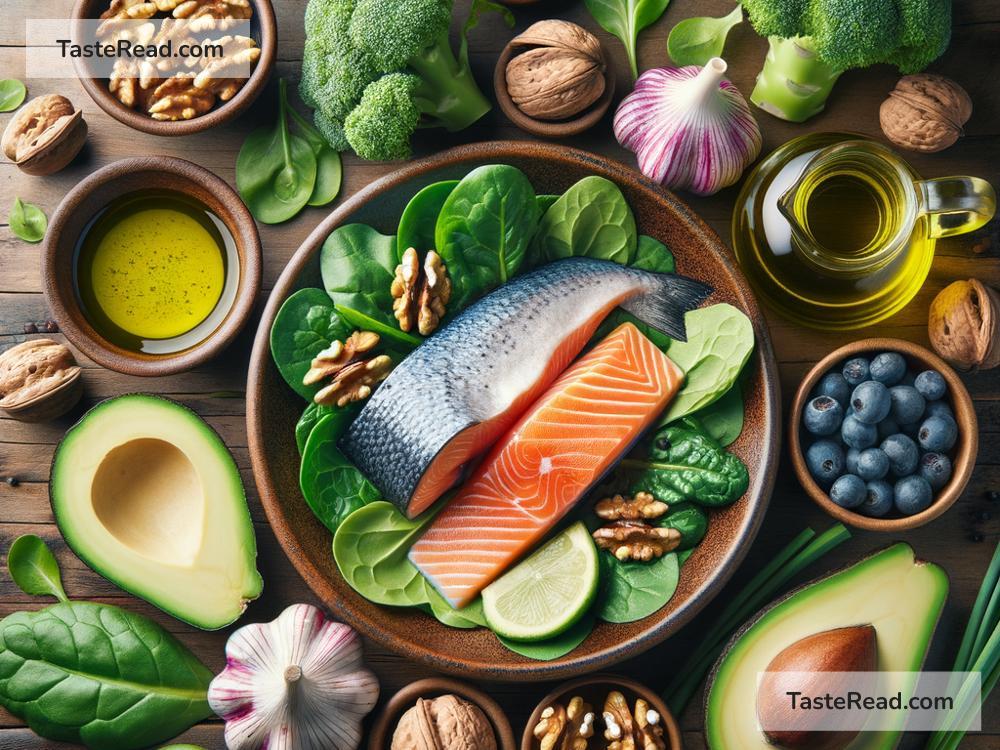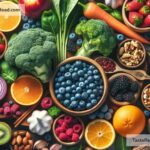Foods That Reduce the Risk of Venous Clots
Venous clots, or blood clots that form in veins, can pose serious health risks. When these clots develop in deep veins, typically in the legs, they can lead to deep vein thrombosis (DVT). If a clot travels to the lungs, it can cause a pulmonary embolism (PE), which is life-threatening. While there are many factors that contribute to venous clots, from genetics to lifestyle habits, one area we can control is our diet. Certain foods have properties that reduce the risk of clot formation and support healthy blood flow. Let’s explore these clot-fighting foods in simple terms.
What Are Venous Clots?
Before diving into the foods, it helps to understand venous clots. Blood clots form when blood thickens and sticks together, often as a natural response to injury. This is how your body stops bleeding when you get a cut. However, clots in your veins can block the normal flow of blood and cause swelling, pain, or severe complications if the clot dislodges and travels to vital organs, like your lungs.
Risk factors for venous clots include being inactive for long periods, obesity, smoking, certain medical conditions, and even some medications. However, a healthy diet can reduce the risk by improving circulation, preventing inflammation, and maintaining balanced blood clotting levels.
Foods That Help Prevent Venous Clots
Here are some foods you can incorporate into your diet to improve blood flow and reduce your risk of blood clots:
1. Fatty Fish
Fatty fish like salmon, mackerel, tuna, and sardines are excellent sources of omega-3 fatty acids. These healthy fats help thin the blood, making it less likely to form clots. Omega-3s also reduce inflammation in blood vessels, which can further lower clotting risks. Aim to eat fish two to three times per week for maximum benefits.
2. Leafy Greens
Leafy greens such as spinach, kale, and Swiss chard are full of vitamin K, which plays a role in blood clotting. Although vitamin K helps your blood coagulate in a healthy way, regular intake balances your body’s clotting mechanisms and supports vein health. These greens are also rich in antioxidants that promote good circulation.
3. Garlic
Garlic has long been appreciated for its medicinal properties. Science shows that garlic can improve blood circulation and has anti-inflammatory effects. Its compounds, particularly allicin, might help prevent blood from sticking together and forming clots. Add fresh garlic to meals for a flavorful and health-boosting punch.
4. Berries
Berries such as blueberries, raspberries, strawberries, and blackberries are loaded with antioxidants, especially anthocyanins. These antioxidants strengthen blood vessels and reduce inflammation, which helps lower the risk of clot formation. Enjoy berries as a snack or toss them into yogurt, oatmeal, or smoothies.
5. Ginger
Ginger is another spice that has powerful anti-inflammatory and blood-thinning properties. It contains a compound called gingerol, which helps prevent excessive platelet aggregation—this is when blood platelets stick together and form clots. Drinking fresh ginger tea or adding ginger to meals is an easy way to include it in your diet.
6. Citrus Fruits
Oranges, lemons, grapefruits, and other citrus fruits contain vitamin C and flavonoids, which improve blood vessel function and reduce inflammation. Vitamin C also strengthens the walls of veins and arteries, promoting better circulation. Having citrus daily is refreshing and supports overall heart and vein health.
7. Tomatoes
Tomatoes are packed with an antioxidant called lycopene, which helps lower the risk of blood clots by reducing inflammation and improving blood flow. Lycopene-rich foods can also lower cholesterol levels, which indirectly reduces clotting risks by preventing artery blockages.
8. Nuts
Nuts like almonds, walnuts, and cashews are rich in healthy fats, vitamin E, and magnesium. Vitamin E supports blood thinning, while magnesium helps relax blood vessels and improve circulation. A small handful of nuts daily can make a big difference in your vein health.
9. Turmeric
Turmeric contains curcumin, an active compound with potent anti-inflammatory and blood-thinning effects. It may reduce the stickiness of platelets, making it harder for clots to form. Adding turmeric to soups, stews, or rice dishes—or drinking turmeric tea—is an effective way to enjoy its benefits.
10. Dark Chocolate
Good news for chocolate lovers: dark chocolate (with at least 70% cocoa content) can improve circulation and prevent inflammation thanks to its flavonoids. Dark chocolate promotes vascular health and may reduce the risk of clot formation as long as it’s consumed in moderation.
Staying Hydrated
While food is important, don’t forget to drink plenty of water. Staying hydrated helps keep your blood flowing smoothly, reducing the risk of it becoming thick and sticky—conditions perfect for clot formation. Avoid excessive alcohol or sugary drinks, as they can dehydrate you and negatively impact circulation.
A Balanced Diet Goes a Long Way
These clot-fighting foods are not miracle cures but powerful allies in the fight against venous clots. Pairing a healthy diet with regular exercise, maintaining a healthy weight, and avoiding smoking can further reduce your risk. If you suspect you’re at risk for venous clots or have a family history, consult a healthcare professional for personalized advice. By making smart food choices, you’re not only protecting your veins—you’re improving your overall health for the long term.
Remember, prevention is always better than treatment. So, stock your kitchen with these nutritious foods and give your blood vessels the care they deserve!


